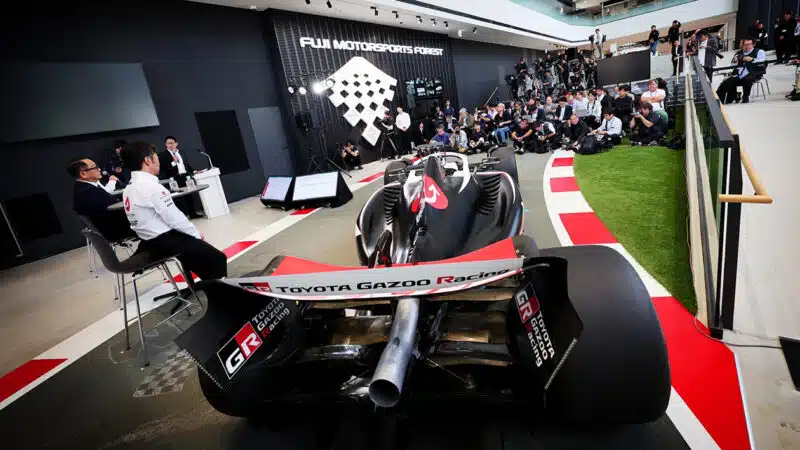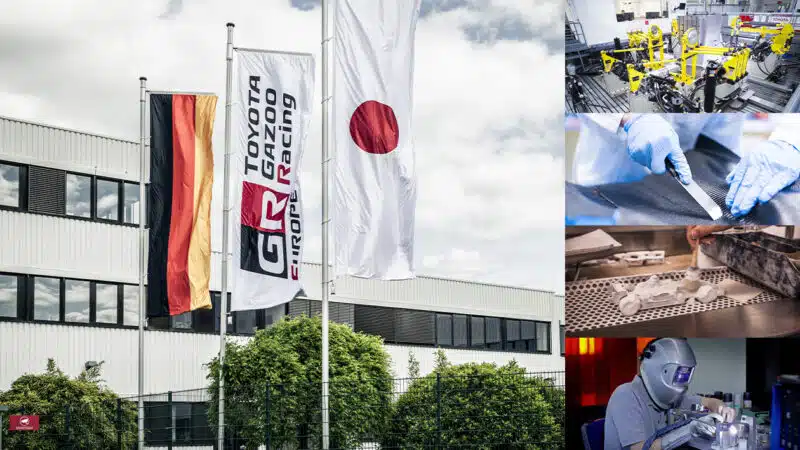MPH: Haas bargain deal is a headstart for any future Toyota F1 team
Haas's new F1 partnership with Toyota runs deep, with extra testing, new manufacturing capability, and pipeline for promising young Japanese drivers. That might only be the start, says Mark Hughes

Toyota branding will run on Haas's car from the US Grand Prix next weekend
Toyota
The new Toyota-Haas link-up is an interesting one. This is not the return of the Toyota team which ran in F1 from 2002 to 2009, but has been very much initiated by Toyota whose President Akio Toyoda initially wanted to establish a young driver development programme which could lead company-backed drivers to F1.
That was initially what Toyota-backed young driver Ryo Hirakawa’s deal with McLaren (announced last year) was about. He has done occasional TCS tests (testing with a car two years old or more) in that role, but as that programme developed so there was a realisation at Toyota that this could be expanded to include more than just drivers. F1 is still unsurpassed as a white hot environment in which to train engineers and the internal engineering impetus gained from the company’s last foray into grand prix racing had rather run out of momentum. But Toyota still retained the vast facilities in Cologne, created initially for the F1 programme of the 2000s, and now used as the base for the WEC programme. There was surely more which could be done to link up with F1.
McLaren – which used the Toyota Cologne wind tunnel until its own tunnel came online this year – is a major team with its own highly-developed, well-staffed and integrated programmes, and was probably unable to envisage expanding from assisting with a driver development programme to one encompassing also engineering. But Ayao Komatsu, team principal at Haas, could see how his team could fulfil that role for Toyota while also neatly transcending the limitations its small size imposed upon the team’s long-term prospects. Haas doesn’t have enough engineers and is limited in its facilities.

Toyota’s Cologne facility in 2019: McLaren used its manufacturing capabilities as well as the wind tunnel
The whole structure of the Haas team – as a low-cost way of entering F1 back in 2016 – is unique. A design base within the Ferrari Maranello site, a customer Ferrari engine/gearbox/running gear deal, the use of Ferrari’s wind tunnel, some contracted build work by Dallara – and the race team’s base in the UK.
The Ferrari partnership remains fundamental – and was recently renewed until the end of 2028. No part of the Toyota deal changes that. Toyota will provide ‘design, technical and manufacturing services’ in exchange for ‘technical expertise and commercial benefits’ from its partnership with Haas. It gives Toyota the upsides of getting up to speed with current F1 practices and technologies without the commitment and expense of setting up its own team again. Ferrari provides the mechanical running gear, the design base and limited time in its tunnel.
Some years down the line, if Toyota was to consider a full return, it would effectively have a rolling start to that programme with a bunch of its own engineers already F1 savvy. Meantime, it gets the marketing benefits of a visibility in F1 – and from the next race the Haas cars will be carrying Toyota branding on the rear wing.
For Haas, as Ayo Komatsu says, “[Toyota] offers a combination of personnel and technical facilities that Haas sorely needs as F1’s smallest team.” As a first step Toyota is funding and part-staffing Haas’s first TCS test programme. There will also be a new simulator installed at the race team base of Banbury. There will be aero simulation and development at Cologne and in future at least some of the parts manufacturing currently done by Dallara. It’s set to be a much more cost-efficient way of Haas spending up to the cost cap limit.
Were Haas to acquire internally the sort of resource Toyota offers would require massive levels of investment beyond the scope of what team owner Gene Haas is willing to make. This potentially transcends Haas’s structural limitations.
Although Akio Toyoda has pleaded for the media not to present this as ‘Toyota Return to F1’, this new Haas deal has made that prospect down the line much more realistic and painless. It’s difficult to see the downsides of this arrangement for either side.

